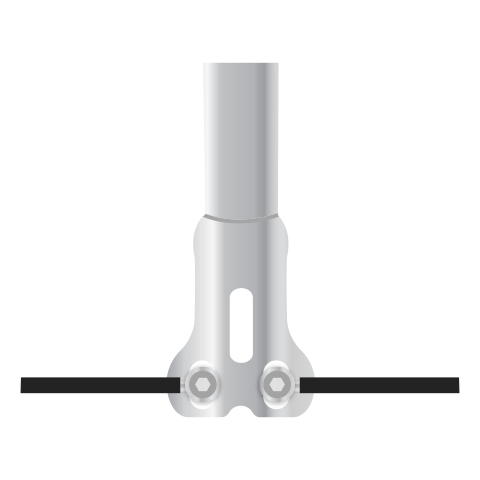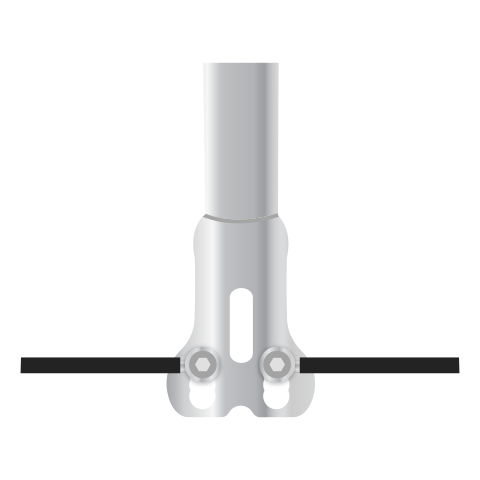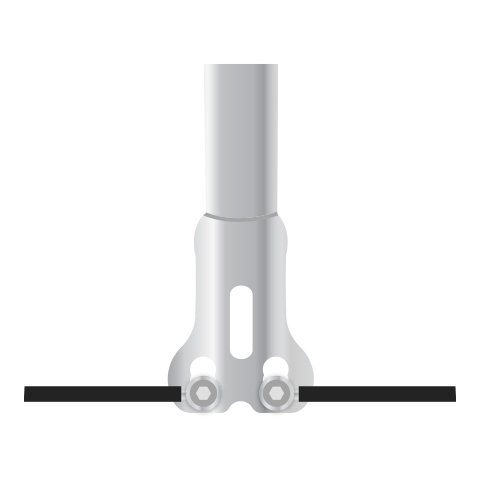- 317-870-3122
- info@topkartusa.net
- Mon - Thu: 9:00am - 5:00pm | Fri: 9:00am - 4:00pm
Top Kart chassis are supplied with stub axles (spindles) that offer three settings as to where the tie rods can be bolted. These holes set the amount of ACKERMAN being run on the kart.
How ACKERMAN works is fairly simple. If you take a piece of string 30cm long, and fix one end to a table, at the free end make a mark at the tip then a second mark 5cm further inward, 25cm from where the string is fixed. The first mark you made represents the outside front tire of your chassis. The second mark representing the inside front tire and the fixed end on the string being the fulcrum of the arc the kart is going through the turn. Keeping it tight, when you move the string straight off you’ll notie that the inside front tire is going through a smaller diameter arc than the outside tire. All things being equal, the inside front tire needs to be turned more into the corner than the outside front. The principle used to achieve this in a kart is known as ACKERMAN. The outside holes give almost parallel steering, which means the front wheels turn at almost the same rate to one another when going through the corner. In using the inner hole offered on the stub axles of your kart, the chassis will have more ACKERMAN or, more of the inner stub axle will turn in ratio to the outer stub axle (also said, the more the toe-out increases as the steering wheel is turned.)
On the track INCREASING ACKERMAN has the effect of increasing “Turn-In” of your chassis. It forces the inside front tires to work more as well as increasing the mechanical chassis jack effect, or in other words will increase the amount of lift off the track you’ll get with the inside rear tire through a corner while at the same time increasing the mechanical grip of the outside rear tire. This is all good stuff but like all good things in life, too much can be bad.
On a track which offers a lot of fast sweeping corners with a fast corner leading onto the longest straight, running a lot of ACKERMAN can reduce your top-end speed. It’s like setting the kart with toe-out where the front tires become dragging front-brakes. On a track with lots of ‘STOP, Turn, Go’ 180° type of corners, lots of ACKERMAN will really help the kart will change direction quickly without overworking the outside front tire while the engine will be helped on acceleration out of the corner with the added chassis jacking offering a greater differential.
All Top Karts offer adjustable ACKERMAN on the steering shaft where the tie rods are bolted to the steering shaft ‘spade’. When supplied from the factory, the tie rods will be bolted on the bottom two holes of the spade. Bolting both links into the upper holes will lighten the steering. It will very slightly make the steering less responsive and will need a little more input of the wheel to achieve the same amount of steer.
Making use of the ackerman adjustability at where the tie rod attaches to the spindle can affect the handling of the Top Kart more greatly than when using the adjustability at the steering shaft. Ackerman positioning at the spindle may affect the driver’s perceived “weight” of the steering wheel, but chassis handling characteristics can also be affected. Normally, the standard position of most Top Karts is the “Middle” position (the ackerman spindle position closest to the tire on that specific spindle). By adjusting the positioning inward, to either the “in” position, will enhance the front end sensitivity and power of the initial turn-in for most corners, respectively. Additionally, by moving the ackerman positioning inward, the driver may experience a loss of front end power and grip from the center of the corner to the exit.
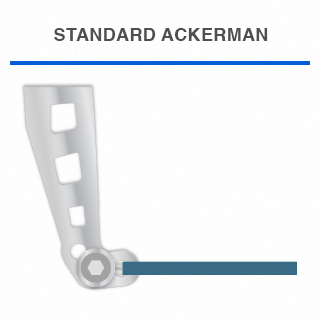
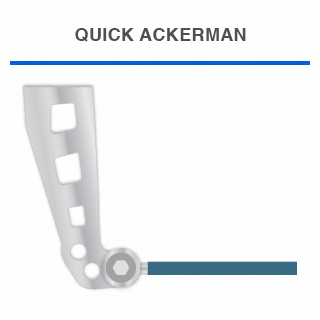
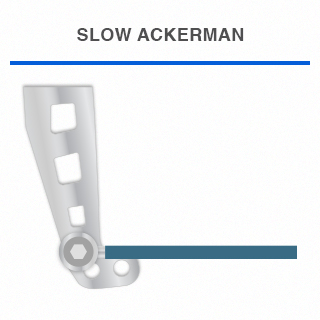


Normally, the ACKERMAN adjustability at the steering shaft controls the rate of steering, and the perceived “weight” of the steering wheel. Moving the ACKERMAN to the optional “up” position (aligning the tie rod ends and tie rod end bolts in the holes that are closest to the steering shaft center of turning radius) will make the Top Kart chassis physically easier to steer, at the sacrifice of precision placement and maneuverability of the front wheels. Keeping the ACKERMAN in the standard “down” position will typically make the Top Kart chassis slightly physically harder to steer, as well as more front end responsive. In most situations, utilizing the “down” position will be the ideal setting of steering shaft ACKERMAN.
